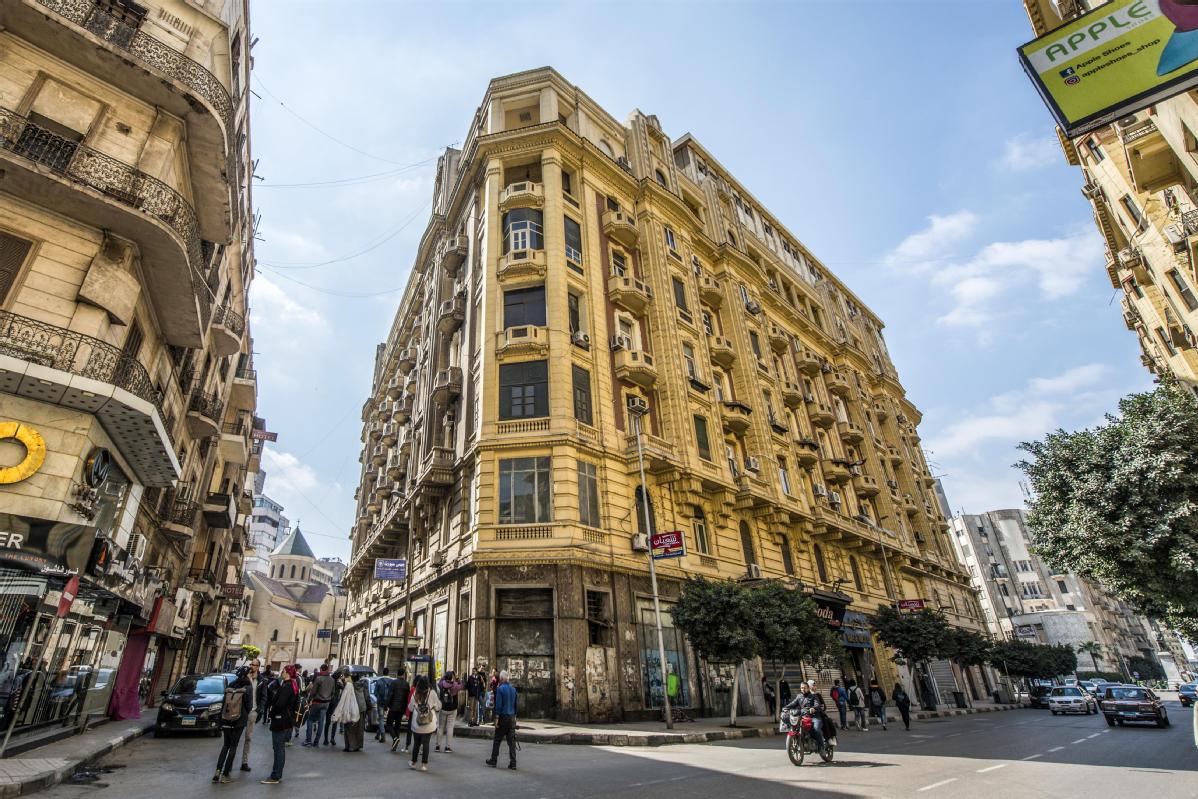Downtown Cairo battles to keep its cosmopolitan heritage alive
China Daily | Updated: 2019-04-03 09:18

CAIRO - Downtown Cairo, with its old European-designed buildings, is wrestling to preserve its cultural heritage as Egypt readies a new capital in the desert.
A stroll through the district takes pedestrians past buildings that meld Islamic and European motifs, neoclassical columns and ornate decorations.
But its elegance and prestige are fading, as the one-way streets and former palaces fall into ruin and shops selling cheap clothes and odds and ends have moved in.
"Some buildings are in a seriously dilapidated state," said Ahmed El Bindari, an architectural historian and volunteer tour guide, in the middle of a group of tourists.
He enthusiastically recounts the history of the old buildings, some housing government ministries, and little passageways but also complains of a lack of heritage preservation.
In the heart of Cairo and bordering Tahrir Square, the district is commonly known as Khedivial Cairo after Khedive Ismail Pasha, an Ottoman ruler who governed Egypt in the mid-19th century.
He is credited with transforming Cairo into a modern metropolis with European influences after being inspired on a trip to Paris.
Khedive Ismail ordered the building of the first opera house in the Middle East in 1869 to celebrate the inauguration of the strategic Suez Canal.
He also commissioned French architects to design geometric, tree-lined streets and downtown became the cultural hub of the city, flourishing with cafes, cinemas and shops.
With its big avenues, facades and bronze statues recalling the French or Italian capitals, the district has also long hosted a lively literary cafe scene, as well as government ministry buildings.
Authorities have traditionally been careful to ensure the buildings retain their style, and many in the city of around 20 million residents are fond of the area.
'Regeneration banner'
Since the 1950s, however, middle-class residents have progressively moved out of the area in favor of quieter, smarter and more modern suburbs.
The ministries and public authorities still there are due to move too, once the new administrative capital being built in the desert some 45 kilometers from the city center is ready.
"What will become of the many ministries such as agriculture, education and health housed in historic palaces and buildings?" Bindari asked.
He points to the gentrification of the so-called Maspero Triangle area hugging the banks of the River Nile. The government is redeveloping it into a financial center, with luxurious shopping malls and hotels.
It has led to thousands of residents in informal housing being relocated to alternative accommodation. "I'm afraid that under the banner of regeneration, entire urban areas ... will be razed to the ground," Bindari said.
But Riham Aram, director of the Historic Cairo Restoration Project, is more upbeat.
Since 2014, nearly 350 buildings have already been restored under an initiative for Khedivial Cairo, she said.
"We've repainted entire buildings and restored decorations using similar material to what was originally used during construction," she said.
"We must maintain this historic district, so it doesn't turn into slums in the future," she warned.
Agence France-Presse
























